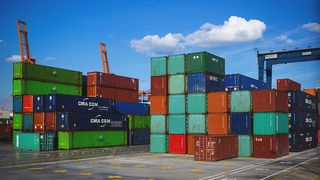What are we to make of the growing global conversation about decoupling and economic distancing from China?
Sure, there have long been complaints about the hazards of dealing with China: its intellectual property theft and the massive subsidies it gives to its state-owned enterprises and national champions.
But isn't "decoupling" a recent Trumpian thing, a vainglorious attempt to maintain American economic primacy while trashing the globalisation consensus. Or just a flailing superpower responding to a fast-rising challenger?
Not exactly. China had implemented a decoupling approach to the US long before Donald Trump assumed power, even if Beijing has never used that word to describe what it is trying to do.
China had implemented a decoupling approach to the US long before Donald Trump assumed power, even if Beijing has never used that word to describe what it is trying to do.
The point matters because we need to be sure about what is causing economic globalisation to unravel, and who is significantly to blame.
It is the Communist Party’s prior determination to decouple on Chinese terms – to game the global system and lock out competitors such as the United States – which is the trigger.
Incidentally, it is also largely these same self-regarding Chinese economic policies – in addition to Beijing’s willingness to use trade as a coercive tool - which is giving rise to serious thought about partial decoupling from China from Western Europe to the UK, Canada and India to parts of south-east Asia, and Australia.
Take the Belt and Road Initiative, which is not generally conceived as part of a Chinese decoupling grand strategy. There are understandable economic benefits for China to advance the BRI, not least to create projects and external markets for its large and lumbering capital-intensive infrastructure and construction companies.
But consider what else it is designed to achieve.
One is to build regional Sino-centric infrastructure, platforms and institutions which will facilitate trade, investment and other beneficial economic exchanges between China and countries along the BRI.
All six main "economic corridors" are designed to connect them to China so that the latter emerges as the central hub.
If this sounds all quite innocent, we need to look at what the Sino-centric model looks like in practice.
The immediate goal might have been to create external capital investment opportunities for Chinese companies. But the greater and grander purpose is to ensure that roads, rail, ports, cables, digital networks and infrastructure begin and end in Chinese provinces – and operate on terms favourable to Chinese interests.
The greater and grander purpose is to ensure that roads, rail, ports, cables, digital networks and infrastructure begin and end in Chinese provinces – and operate on terms favourable to Chinese interests.
Typical is the takeover of the Greek port of Piraeus in 2016 by Chinese state-owned COSCO, which received billions from state-owned China Development Bank to complete the transaction.
Shortly after, the Chinese-controlled entity signed agreements with Shanghai International Port Group which were highly beneficial to the latter.
And as part of the Piraeus deal, Chinese state banks are now providing loans to Greek shipping companies to build their cargo ships exclusively in Chinese shipyards.
Bear in mind that using state resources to build the vast Sino-centric economic system within which Chinese companies and entities dominate puts these companies in an insurmountable position of strength to negotiate the conditions for any deal.
Disputes and disagreements will not be resolved by pre-existing laws and rules, but through a negotiation where Chinese political and economic leverage is brought to bear, or according to BRI rules and processes drafted by Beijing.
Additionally, and with a greatly reduced commercial presence in East Asia and Eurasia, the capacity for American companies and authorities to set and/or revise commercial and quality standards in all sectors is greatly diminished.
These can be simple such as the sizes of rail gauges, or complex such as the interoperability of technologies such as 5G networks. Once such standards are set, it is expensive and usually prohibitive for companies and economies to operate in a different economic ecosystem.
Combined with Sino-centric infrastructure, institutions, and logistical networks, BRI economies become captive to China while outsiders such as America are in a much weaker position from which to enter.
The explicit objective is not simply to ensure China becomes an advanced and innovative economy, but to control the global supply chains, innovation, and know-how required to ensure Chinese companies dominate these sectors in global markets.
More evidence that China's policies were pulling apart globalisation long before Trump is clear in complementary plans such as Made in China 2025.
This foresees control and dominance of entire manufacturing processes, supply chains, and services supporting a dozen advanced industry sectors. Against World Trade Organisation rules, it specifies targets for the domestic content of core components and materials: 40 per cent this year and 70 per cent by 2025.
The explicit objective is not simply to ensure China becomes an advanced and innovative economy, but to control the global supply chains, innovation, and know-how required to ensure Chinese companies dominate these sectors in global markets.
In looking to decouple, lock out or else bind the hands of America and other major economies from being able to compete, it is difficult to see how globalisation as we know it can survive this Chinese undermining and subterfuge.
Trump’s version of decoupling might be a ragged response to deny China the capital, market access, technology and know-how needed to achieve Beijing’s aims. It is fraught with unintended and unknown consequences.
But the greater fault is we spent too long excusing and normalising these Chinese economic and industrial mindsets and policies at a time when the US and other countries had much more leverage needed to change Beijing’s behaviour.
In any event, the China decoupling story has a long way to go. The important question being, on whose terms?






